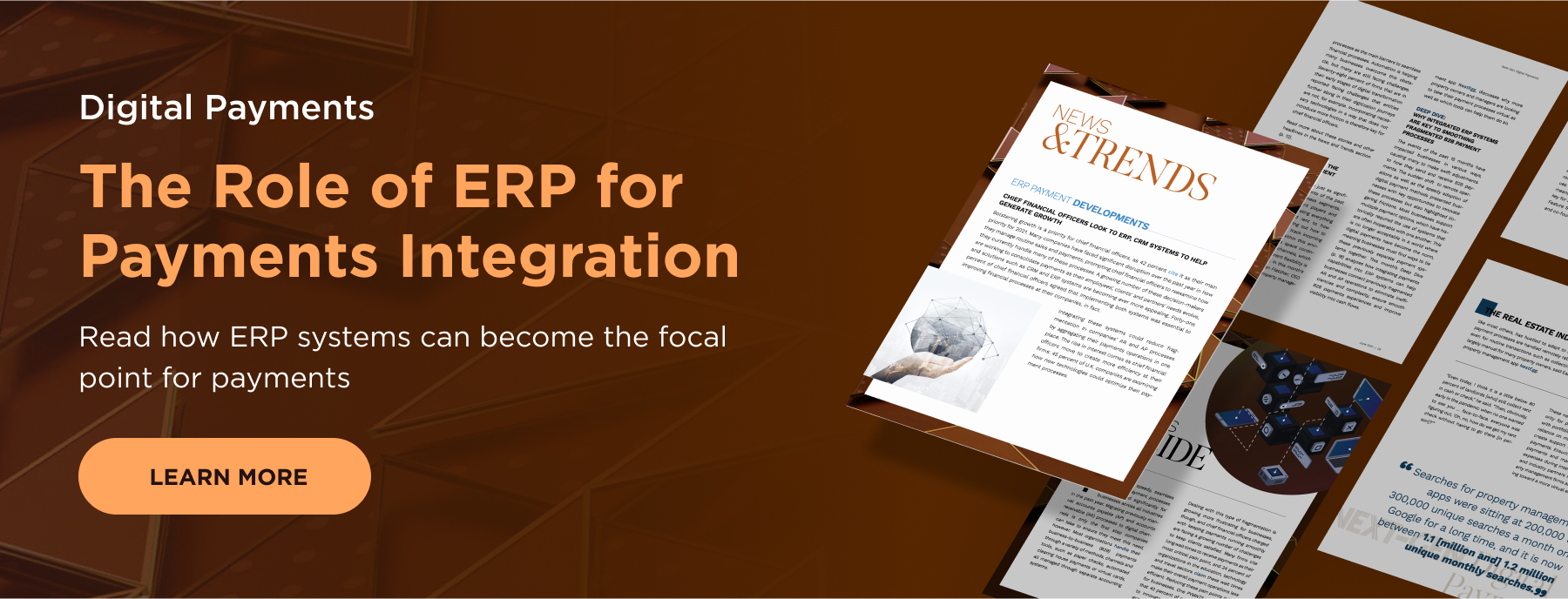Businesses have a lot of money and time invested in their ERP applications.
And rightfully so. ERPs are the nerve center of a business, managing its data and many of its financial processes.Yet ERPs are largely disconnected from one of the most important business transactions: payments.
In most organizations, inbound and outbound payments are processed through a hodgepodge of point solutions and closed-loop networks with unique logins and passwords, file formats, accounts requirements, and proprietary integrations. Data flows separately from payments, and is often incomplete and inaccurate. And data connectivity is limited between the ERP and payment systems.
As a result, making and receiving payments is inefficient, unnecessarily complex, and risky for small businesses as well as for large corporates who are moving millions of dollars across borders.
Evolving corporate needs make closing the gap between ERPs and payment systems imperative.
CFOs and treasurers require real-time data connectivity and visibility, and the ability to initiate, process, and reconcile accounts payable and accounts receivable transactions in a unified fashion.
With hundreds of ERPs on the market, payments connectivity has been no small feat for Fintech platforms and bank portals.
But a new breed of payment solution is making it easier by combining direct integration with any legacy software application, ERP platform or bank API layer with real-time payments supporting real-time data flows.
These innovative unified solutions make it possible for businesses and the Fintechs that serve them to integrate directly into a bank and originate transactions across payment networks without having to toggle from one bank portal to another.
The Power of Payments Connectivity
There’s no question that tightly connecting payment systems with ERPs can improve B2B payments efficiency through automated reconciliation and accounting.
Payments connectivity also provides buyers and suppliers with greater transparency and better communication across the commerce lifecycle.
As one example, real-time visibility into payments can create opportunities to finance transactions and support the flow of capital for both buyers and suppliers.
Better data connectivity may also assist CFOs in their analysis and decision-making.
No wonder that data integration is becoming a necessity in more financial operations.
The ERP has played a central role in the financial operations of businesses. With better integration to payment systems – where the ERP can:
![]() Share data
Share data
![]() Manage transaction information
Manage transaction information
![]() Disburse documents
Disburse documents
![]() Collect digital signatures
Collect digital signatures
ERPs can become even more critical to a business.
Greg Bloh, Transcard CEO and author of this article, took part in the interview with Karen Webster of PYMNTS.com, on the topic "CFOs Seek New Solutions To Extend The Value Of Their ERPs".
Read the full article here.
See the full interview below:





